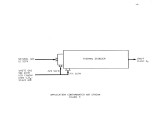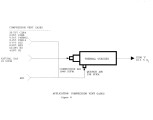| Title |
Ultra Low NOx Design for Thermal Oxidation of Waste Gases |
| Creator |
Nutcher, Peter B.; Lewandowski, David A. |
| Publisher |
University of Utah |
| Date |
1993 |
| Spatial Coverage |
presented at Tulsa, Oklahoma |
| Abstract |
Nitrogen Oxides (NOx) are one of six chemical species classified as criteria pollutants under the National Ambient Air Quality Standards (NAAQS) of the Clean Air Act. NOx in combination with Volatile Organic Compounds (VOC) present in the atmosphere can combine in the presence of sunlight to form ozone. Ozone has been found to be damaging to human health in concentrations as low as 0.1 ppmv. In 1992, the EPA reclassified areas of the United States for attainment of NAAQS standards. 185 areas were classified as non-attainment for ozone. ... |
| Type |
Text |
| Format |
application/pdf |
| Language |
eng |
| Rights |
This material may be protected by copyright. Permission required for use in any form. For further information please contact the American Flame Research Committee. |
| Conversion Specifications |
Original scanned with Canon EOS-1Ds Mark II, 16.7 megapixel digital camera and saved as 400 ppi uncompressed TIFF, 16 bit depth. |
| Scanning Technician |
Cliodhna Davis |
| ARK |
ark:/87278/s6pv6nz1 |
| Setname |
uu_afrc |
| ID |
10021 |
| Reference URL |
https://collections.lib.utah.edu/ark:/87278/s6pv6nz1 |






















